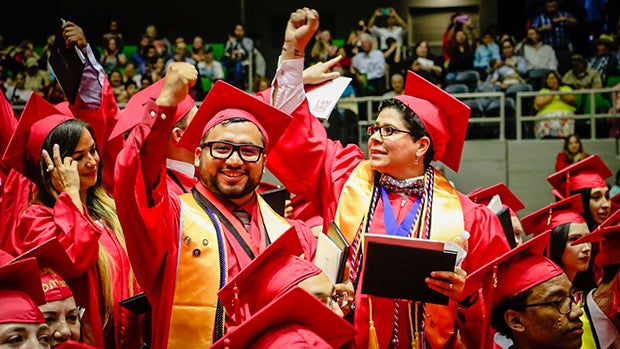In response to last night’s State of the Union address, Aspen Institute program directors are reacting to President Barack Obama’s promises to tackle some of the biggest issues facing the nation today. Below, Josh Wyner, executive director of the Aspen Institute College Excellence Program reflects on how the nation’s economic development relies, partly, on our country’s community colleges.
President Obama’s State of the Union address and the response from House Republican Conference Chair Rep. Cathy McMorris Rodgers challenged everyone to consider what we can do to increase economic opportunity for all Americans, especially those who are today not full participants in our economy. While philosophical differences drive important distinctions in how each party wants to address this challenge, our public officials increasingly seem to agree on at least one thing: solutions will rely on the success of America’s community colleges.
The link between employment and a college education has never been stronger. College degree holders, on average, earn 74 percent more than those who don’t have a degree. The path to a college degree or certificate and the opportunity to find a job paying good wages runs directly through community colleges for 7 million students — that’s 40 percent of college undergraduates — including a disproportionate number of low-income and minority students.
Whether they are enrolled in programs that deliver specific job skills, or beginning their journey to a bachelor’s degree, community college students need these low-cost institutions to more consistently deliver high-value results. The hard fact is that national community college completion rates are stuck at, or below, 40 percent. But behind these averages are exceptional performers that have achieved very strong learning, completion, and labor market outcomes for their students.
One of the greatest challenges faced by community college students is the gap between their aspirations — 68 percent report wanting a bachelor’s degree when they enter — and the realities they face — only 15 percent receive one within six years. Santa Barbara City College, in California, and Santa Fe College, in Florida, have shown how different results can be achieved. Both have developed strong relationships with selective four-year colleges and work hard to make sure they prepare their students for the rigors of the University of California and the University of Florida. The results: exceptional transfer and bachelor’s degree attainment rates, more than twice the national average.
For students aiming to move directly from college to the workforce, disappointment too often follows completion of a degree or certificate. Recent labor market data show that many recent college graduates earn little more than high school graduates. By starting with the students’ most common end-goal in mind — a good job — Walla Walla Community College, in Washington, and Lake Area Technical Institute, in South Dakota, make sure their students’ aspirations are met with success. Through deep collaboration with employers, both have figured out specifically what students need for job success and then deliver both the technical skills and “soft skills” (communications, teamwork, punctuality) that employers want and expect in fields as varied as wind energy, nursing, and auto repair. The results are very high employment rates for graduates, who earn wages that average about 50 percent more than for other new hires in their regions.
These community colleges are making good on the promise of delivering what students deserve and our nation needs. Federal and state policymakers should work to highlight these top performers, so that students and families are better able to choose high-quality pathways to education and employment. They should fully fund colleges that deliver these exceptional results, enabling them to expand their offerings to even more students, something that does not always happen. And they should align federal policies and funding streams in ways that challenge all colleges to follow suit, rewarding those that provide top-notch credentials and deliver strong job skills at affordable costs. Our nation, its political leaders from both sides of the aisle, and literally millions of students are relying on it.

